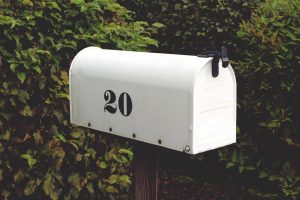The advancement of digital technology continues to propel the online marketing sphere, presenting businesses with dynamic and effective tools to expand their reach and optimize their advertising budget. LinkedIn, the world’s largest professional network, is central to this marketing revolution, providing advertising solutions tailored to reach a highly engaged audience. The platform’s Matched Audiences feature is one such instrument, designed to help you target the right professionals for your business, ultimately allowing you to maximize your return on investment. However, understanding and effectively implementing this feature requires an in-depth knowledge of the LinkedIn advertising ecosystem.
Understanding the Cost of LinkedIn Advertising
The key to optimizing your LinkedIn Advertising budget begins by understanding the platform’s cost structure. Notably, because LinkedIn uses an auction system for ads, your costs will be determined by a variety of factors.
LinkedIn Advertising offers businesses a unique opportunity to reach a highly targeted professional audience. However, it’s important to understand the factors that affect the cost of advertising on this platform.
Factors Affecting LinkedIn Ad Costs
With LinkedIn’s auction system, multiple variables determine the cost of LinkedIn advertising. These include the competitiveness of your bid, the relevance of your ads to the targeted audience, and the quality of your ads.
When it comes to bidding on LinkedIn, it’s crucial to find the right balance between competitiveness and budget. While a higher bid may increase the chances of winning the auction and getting your ad seen, it can also lead to higher costs. On the other hand, a lower bid may save you money, but it could result in less visibility for your ads.
Another important factor that affects the cost of LinkedIn advertising is the relevance of your ads to the targeted audience. LinkedIn allows you to target your ads based on various criteria such as job title, industry, and location. The more relevant your ads are to the audience you’re targeting, the higher the chances of engagement and conversions. This, in turn, can lead to lower costs and better return on investment.
It’s also important to note that the quality of your ad is far-reaching as it includes everything from the design and message to the Call To Action (CTA). A well-designed and compelling ad is more likely to capture the attention of LinkedIn users and drive them to take the desired action. This can result in higher engagement rates and lower costs per click or conversion.
The auction system is balanced to ensure that both LinkedIn and its advertisers achieve their goals. By understanding what affects ad costs and taking these factors into consideration, businesses can optimize their ad content and bids, ultimately leading to more effective advertising campaigns.
In addition to these factors, it’s worth mentioning that LinkedIn offers various ad formats, including sponsored content, sponsored InMail, and text ads. Each format has its own pricing structure, and businesses should carefully choose the format that aligns with their advertising goals and budget.
Furthermore, LinkedIn provides robust targeting options that allow businesses to narrow down their audience based on factors such as company size, job function, and seniority. This level of granularity ensures that your ads are shown to the most relevant professionals, increasing the chances of generating high-quality leads and conversions.
Lastly, LinkedIn provides detailed analytics and reporting tools that allow advertisers to track the performance of their ads. By regularly monitoring and analyzing these metrics, businesses can make data-driven decisions to optimize their campaigns and maximize their return on investment.
Targeting the Right Audience for Your LinkedIn Ads
Once you understand the cost structure of LinkedIn advertising, you’re better positioned to strategically target the right audience for your ads. This is where LinkedIn’s Matched Audiences feature comes in. This tool enables you to match your existing customers and interested prospects with similar LinkedIn users, thereby boosting the relevance and effectiveness of your ads.
When it comes to targeting the right audience for your LinkedIn ads, it’s important to consider various factors. One factor to consider is the demographics of your target audience. Are they predominantly professionals in a specific industry or job function? Understanding the characteristics of your target audience will help you tailor your ads to resonate with them.
In addition to demographics, psychographics play a crucial role in targeting the right audience. Psychographics include factors such as interests, values, and behaviors. By understanding the psychographics of your audience, you can create ads that speak directly to their needs and desires.
Maximizing Relevance with LinkedIn Ad Targeting
Proper ad targeting is crucial for maximizing relevance and, by extension, return on investment for your LinkedIn Ads. By using LinkedIn’s Matched Audiences, you can target ads to users who are more likely to be interested in what you’re advertising. This increases the chances of them engaging with your ad and makes the most of your advertising budget.
Another key part of maximizing relevance with LinkedIn ad targeting is understanding the different targeting criteria available. Some of these include job function, seniority, company size, industry, and more. All these options allow businesses to get very granular with their targeting, increasing ad relevance and effectiveness.
When it comes to ad targeting, it’s important to strike a balance between reaching a broad audience and ensuring relevance. While targeting too narrowly may limit your reach, targeting too broadly may result in your ads being shown to people who are not interested in your offerings.
Comparing Different Audience Options for LinkedIn Ads
LinkedIn offers a range of audience options for advertising. In addition to Matched Audiences, LinkedIn has other targeting features such as Lookalike Audiences, Interest Targeting, and Audience Expansion. Each comes with its own pros and cons, and the most effective one for your business would depend on your specific needs and goals.
For instance, Matched Audiences help you deliver tailored ads to specific users based on their previous interactions with you. On the other hand, Lookalike Audiences can help expand your reach by targeting LinkedIn users who are similar to your existing customers. But the only way to determine the most effective targeting feature is through rigorous testing and analysis.
Interest Targeting allows you to target users based on their interests and activities on LinkedIn. This can be particularly useful if you have a product or service that is relevant to a specific interest group. By targeting users who have shown interest in related topics, you increase the chances of capturing their attention and driving conversions.
Audience Expansion, on the other hand, helps you reach a broader audience by automatically expanding your targeting criteria to include users who have similar characteristics to your existing target audience. This can be a valuable option if you want to increase brand awareness and reach new potential customers.
Ultimately, the success of your LinkedIn ads depends on your ability to effectively target the right audience. By leveraging the various audience options available and continuously analyzing and optimizing your campaigns, you can maximize the relevance and effectiveness of your ads, ultimately driving better results for your business.
DIY: Building Your Own LinkedIn Matched Audiences List
If you’re interested in creating a Matched Audiences list for your LinkedIn ads, the process is straightforward and manageable even for beginners. However, to achieve the best results, thoroughness, and following best practices is key.
The process begins by logging into your LinkedIn Campaign Manager. From there, you can import a list of companies or contacts, or add a list of your website’s visitors. It’s important to note that for LinkedIn to find matches, your list must contain at least 300 individuals’ LinkedIn IDs, email addresses, or account numbers. Once the list is uploaded, LinkedIn will then use its algorithm to find similar professionals, completing your Matched Audience.
But what exactly are Matched Audiences? Matched Audiences is a powerful targeting feature offered by LinkedIn that allows you to reach specific groups of professionals based on their characteristics or interactions with your business. By creating a Matched Audiences list, you can tailor your ads to a highly targeted audience, increasing the chances of engagement and conversion.
When importing a list of companies or contacts, you have the option to upload a CSV or TXT file. This flexibility makes it easy to integrate your existing customer database or prospect list into your LinkedIn advertising strategy. By leveraging your own data, you can ensure that your ads are reaching the right people who are already familiar with your brand.
On the other hand, if you choose to add a list of your website’s visitors, LinkedIn provides a handy JavaScript pixel that you can place on your website. This pixel tracks the visitors and captures their LinkedIn profile information, allowing you to target them with relevant ads on LinkedIn. This method is particularly useful if you want to retarget people who have already shown interest in your products or services.
Once you have uploaded your list, LinkedIn’s algorithm goes to work. It analyzes the characteristics and behaviors of the individuals in your list, and then finds similar professionals who match those criteria. This process ensures that your Matched Audience is not only highly targeted but also expands your reach to potential customers who share similar traits with your existing audience.
It’s important to regularly update and refresh your Matched Audiences list. As your business grows and evolves, so does your target audience. By continuously refining your list and adding new individuals, you can stay ahead of the game and ensure that your ads are always reaching the most relevant professionals.
Ultimately, LinkedIn advertising presents an effective means to reach a focused professional audience. By understanding and utilizing tools such as Matched Audiences, businesses can maximize their advertising budget and bolster their online marketing efforts.





